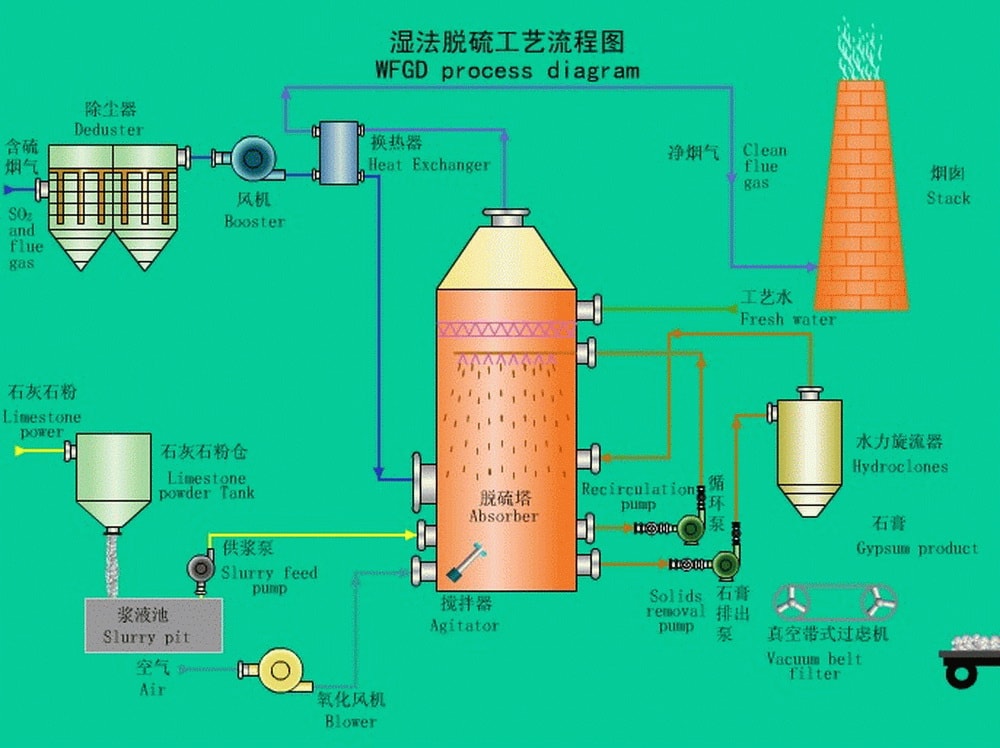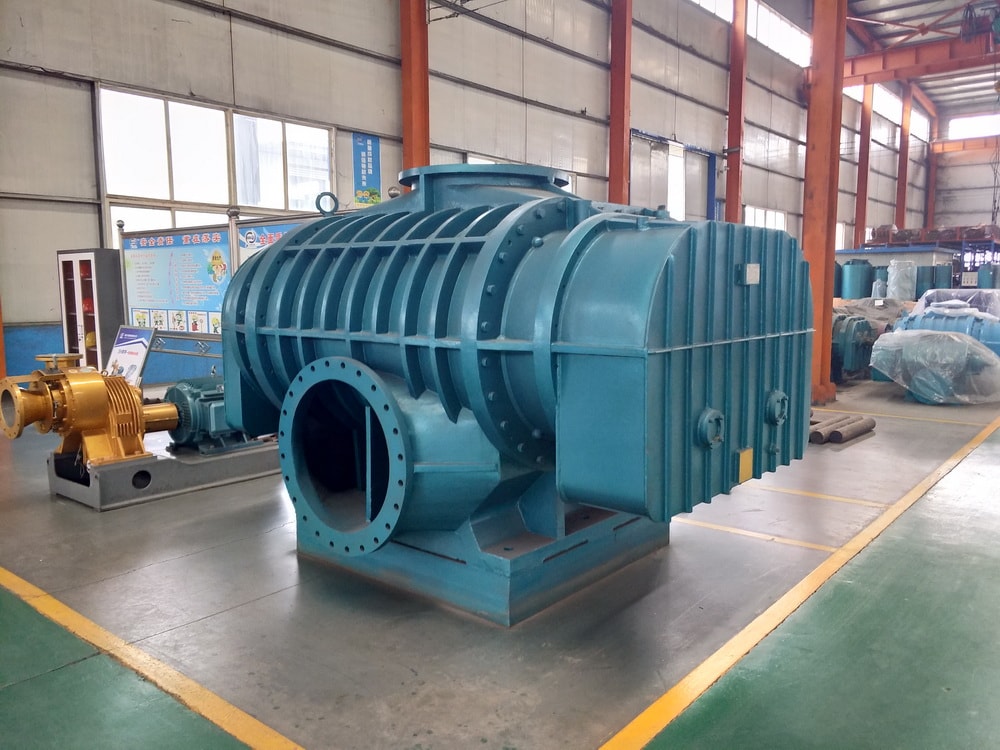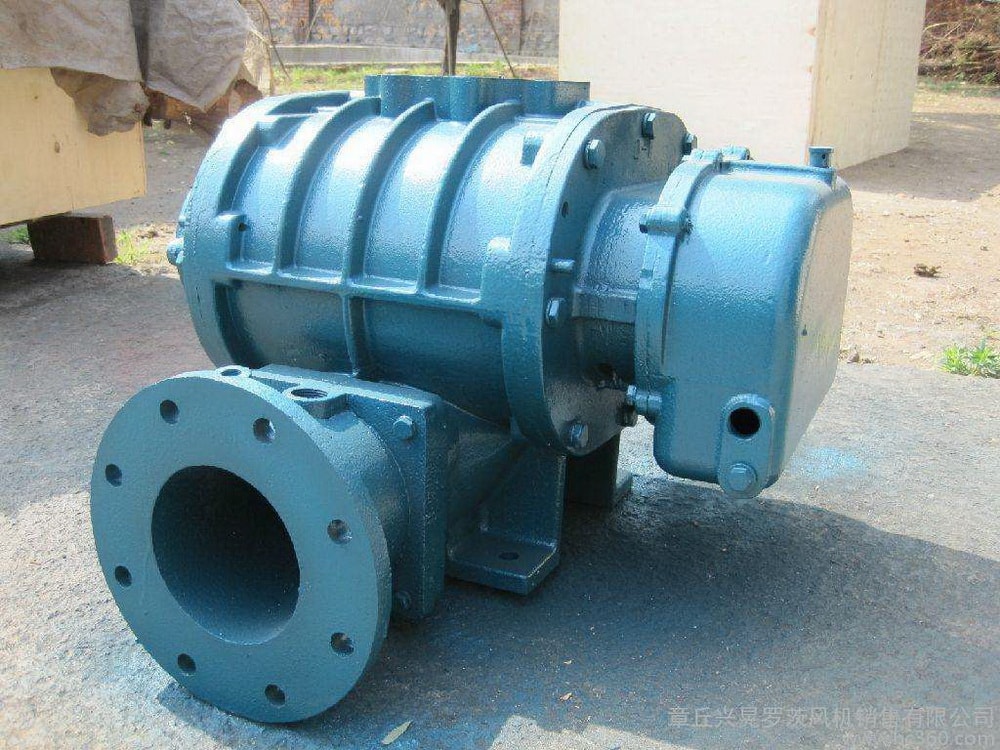E-mail: zqdicheng@chinadicheng.com
Thermal power plant flue gas desulphurization device In order to fully oxidize calcium sulfite slurry to calcium sulfate, a desulfurization oxidation blower is especially provided to introduce air into the absorption tower. Oxidation blowers generally use Roots blowers because of the high pressure requirements. According to the level of absorption tower liquid level, that is, the need of blower head, it is divided into a primary oxidation blower and secondary oxygen weathering.

1) During the installation stage, pay attention to the cleanliness of the nozzle. Do not use the welding slag and debris to enter the blower. Otherwise, the blades may be damaged. In the general manufacturer's manual, there is a saying “the size of the medium particle must not exceed half the working clearance of the blower”. The working gap is small and the amount of debris is much larger than this size. In particular, a serious equipment failure occurs when the steel head enters the interior.
2) When commissioning, the general air load will run for a short period of time, typically 30 minutes. The empty load is to open the emptying valve (pressure relief valve), and the pressure relief valve can be turned off to carry out the load operation after the machine has no problem.
3) For the secondary oxidation blower, an intercooler is provided, that is, the air exits from the primary blower and passes through the intercooler before entering the secondary oxidation blower to reduce the inlet air temperature of the secondary blower if the intercooler is cooled If the effect is not good, the temperature of the secondary oxidation blower will be too high. Therefore, in the process of commissioning and operation, the cooling water of the intercooler should be ensured and the flow rate should be sufficient. The intercooler is generally controlled below 40 degrees. Some projects install pressure gauges in the cooling water pipeline. Actually, they are concerned about the flow rate, water meter or flow direction indicator.
4) Noise. Oxidation blower noise problem is a common problem in most domestic power plants. In order to reduce noise, a noise enclosure is usually installed outside the blower. However, the entrances and exits outside the noise enclosures cannot fundamentally solve the noise problem. There is a silencer at the entrance, and the size of the silencer has a direct influence on the noise size. For the large-capacity oxidation blower, where the noise at the cooler is also obvious, and placed outside the soundproof cover, a power plant insulation treatment of the intercooler, a certain effect on the sound insulation, but the effect is not ideal.
5) Oxidation blower pressure, rated pressure on each oxidation blower brand name. The boost pressure depends on the back pressure of the system connected to the exhaust port. In actual operation, the pressure generally depends on the absorption column's liquid level and slurry concentration. If the distance between the liquid level and the oxidation spray nozzle is 10 meters and the slurry density is 1150 kg/m3, the oxidation blower should overcome the resistance of the slurry 115 kPa. It is strictly prohibited to adjust the opening of the outlet door to adjust the pressure and flow.

The normal operation of the pressure will not exceed the rated pressure, in order to overcome the emergence of pressure anomalies, should pay attention to the following matters during operation.
(a) The pressure depends on the liquid level and density of the absorption tower. Since the absorption tower is provided with an overflow pipe, the liquid level may not be the key point for control. The density of the slurry is critical. Generally, the slurry concentration runs at about 20% (a few power plant slurry The concentration of 30%), when the concentration greatly deviates from the design value and operates at a high level, causes the oxidation blower outlet pressure to be high, and may even exceed the rated pressure. Too high concentrations also increase equipment and pipe wear. Therefore, the liquid level and slurry concentration of the absorption tower must be controlled.
(b) Poorly oxidized air lines may also cause the outlet pressure to rise. Therefore, it is necessary to pay attention to the oxidation nozzle and whether it is fouled. If scaling fouls the pipe, the pressure will increase. The effective means of avoiding fouling plugging is to control the oxidation air desuperheated water, (the temperature is too high to oxidize the air to the wet and wet interface at the easy structure); during the inspection and repair, the oxidation pipeline is inspected
(c) Backstop. In order to avoid the standby oxidation blower running, the oxidation air is reversed. Generally, the outlet of the oxidation oxidation blower is exclusively a backstop door. If the backstop door fails, the blower cannot be fully opened during the operation of the blower, which may cause blower blow-up. This probability is relatively small and therefore easily overlooked.
(d) (Safety Gate) Oxidation blower outlet is equipped with safety valve protection device. When the pressure is abnormal, the safety valve will act to protect the equipment from damage due to pressure abnormality. The safety valve is in good condition and is the key to protect the equipment.
(e) DCS pressure indication, current indication should be accurate, so that operators can accurately determine the actual operating conditions of equipment and systems, if the pressure rise is accompanied by a sharp increase in current, but the current increase is often not enough to cause relay protection action, This requires the operator to be noticed.

6) Startup notes. Roots blower and axial blower principle is different, in order to avoid the start of the load with the start process, open the pressure relief valve before starting, oxidation blower starts and then close the pressure relief valve.
In the past year or so, many desulphurization projects have adopted the “unloading starter valve”. The feature of this type of valve is that before the blower starts, the valve is in the state of opening and releasing pressure. When the blower is started, the valve automatically closes, reducing the electric mechanism. Cable and DCS control. Sometimes this kind of valve is not closed automatically, you can open the valve to connect air guide air needles, as long as you open the internal structure of ia is very simple, a look to know.
7) Lubricating oil. Before and during the inspection tour, pay attention to the lubricating oil level and the oil temperature. The lack of lubricating oil directly causes the bearing temperature to rise, and the lubricating oil is filled to the middle of the oil line (slightly high) position. When the oil level is low, stop the fuel and do not refuel during the trial operation. Cooling water should be open. Lubricating Oil Emulsification One of the oily problems is water; one is where the equipment cooling water leaks into the tank and the latter is more severely in need of disposal.
8) Vibration. In addition to the problems of equipment machinery itself, poor access can also result in high vibration. In particular, where the blower is close to coal yards and ash yards, large dust must periodically clean the filtering material in the inlet muffler. The pressure drop at the inlet of a power plant blower is large, and the vibration after processing is also reduced. Vibration can also cause loose temperature measuring elements or wiring, and even cause high temperature misoperation.

Copyright © Shandong Dacheng Machinery Technology Co., Ltd All Rights Reserved | Sitemap | Powered by 